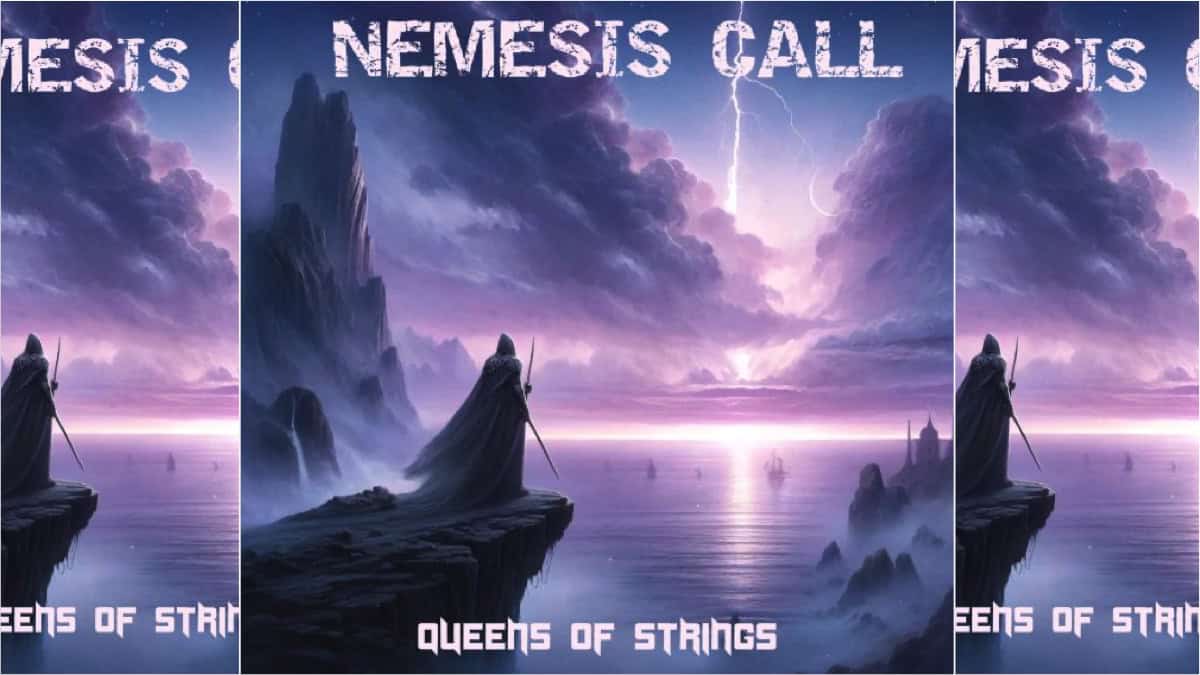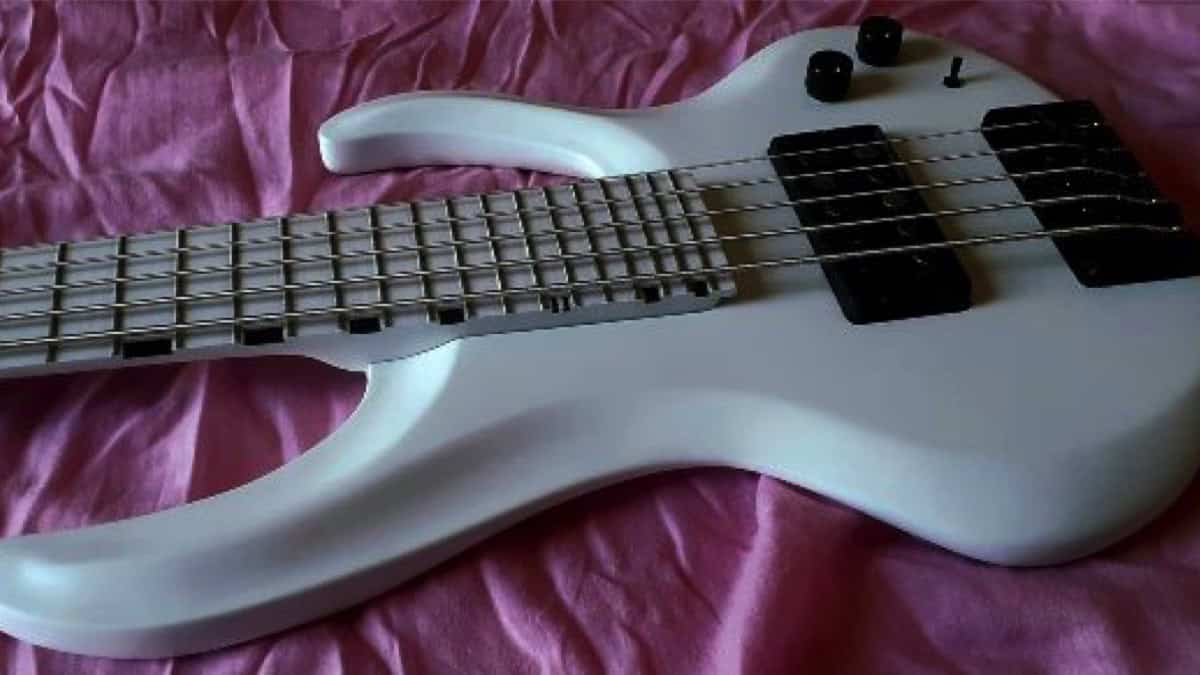Latest
Applied Techniques With Igor Saavedra – The Path for a Proper Bass Sound Part 2

Meet Igor Saavedra
The chain is only as strong as its weakest link……..
In the last issue we covered links 1 to 7 on this Path for a Proper Bass Sound. Now we will look at links 8 to 14 in order to finish this saga.
8 – The Bass Head
This is a very complex and simple link at the same time, but a very important one indeed. In order to be able to decide what type of bass head you need, it’s crucial to consider many factors such as price, power, size, noise/signal ratio, if it has an input attenuator, overload and clipping leds, the Eq type (Graphic, Knob, Semi parametric, etc), contour filters, if it has a balanced line output or just regular 1/4 connector, and if it also has level regulation for that specific output signal so that we make those level modifications just for the sound engineer without affecting our levels. It’s also important to consider if the bass head has a ground lift to avoid annoying noises that show up once in a while, and a “pre Eq” or “post Eq” selector to choose if the signal that we are going to send to the mix board is going to be affected by our Eq modifications, or if it’s going to be a neutral signal. Always try to use speakon connectors for the speaker outputs of your bass head. This is even more important for high current amplifiers that once in a while can send a deadly voltage into the metal ¼ connectors that in some circumstances can burn your fingers or even injure you if you are touching them, and your other hand is touching the ground. I know what I’m saying here because this happened to me once in a sound check and I did have to cancel that concert. Finally, also consider if this bass head is rack mountable or not.
9 – The Effects
For this link in particular we must apply the concept of “less is more”, so we have to be very cautious with how much of the effects we’re going to add to the signal. There’s nothing worse for our sound. Don’t fall into “abusing them”, instead of “using them”. It’s good not to forget that 90% of the time we are playing a “supportive bass” role, so the amount of effect must be very subtle.
For me, there’s nothing better than an analog effect, and I’ve had the best digital effects available on the market. Regarding compressors, if you are not prepared to spend a big amount of money on that, let it go, because there’s going to be a huge chance that this is going to harm your sound instead of helping it (same for wireless systems).
10 – The Eq concept
This is one of the “non technological links”, but requires a lot of experience. The best advice I can share on this link is to equalize “around 0 db” (especially on graphic equalizers), otherwise we will just be increasing or decreasing the gain with a potential overload or “underload” of the input signal. It’s also good to be clear on which Eq bands are related to specific notes in order to increase them or decrease them based on our taste.
11 – The Bass Cabinet
The biggest headache of a bass player is here, but what to say, we love them, and we want them big, and looking good, but mostly, “powerful and good sounding”.
The best wood for a bass cabinet is usually plywood, but new materials are coming out and very specific MDF’s are gaining terrain over plywood with the benefit of their ultra light weight. The proportion within the cabinet’s measurements is really very important. And not just the total internal volume, because maintaining the same internal volume is not the same with a deeper than wider cabinet, instead of a wider, deeper one, or a higher and wider cabinet, etc. Be sure to check that out.
It’s also important to consider the air vents and their size, or no air vents. Plastic accessories and their proper installation are important too, because if their quality is low, they will have a tendency to vibrate and loosen. The connectors are very important as well. I prefer using speakon connectors as much as possible. Finally, where to place the cabinet will make a huge difference in the sound. Obviously a cabinet placed on the ground will sound much deeper and will give a fuller sound to the bass frequencies, with less high or mid presence than the same cabinet placed higher on a table, or a chair.
12 – The Speakers
The so called “Output transducer” is one of the most important links on this chain, and one of its weakest points at the same time due to the fact that this link is the exact moment where the electric energy is transformed into mechanical energy, and this means there’s a huge loss of the original information. The game is about loosing the least amount of information as possible, so a poor quality speaker will definitely terminate any possibility of getting a good sound.
I will mention some of the characteristics you have to consider in order to be able to choose a bass cabinet properly:
1. Cone diameter (5″, 8″, 10″, 12″, 15″, and 18″)
Believe it or not, it’s proven that a vast amount of small diameter speakers within a cabinet will reach much lower frequencies than just a single 18 inch cabinet. So be sure to try everything, and pay attention to the sound.
2. Cone material
The list of materials is huge, and each of them will have different sound properties…Polypropylene, Aramid, Kapton, Kevlar, HCL, Cast aluminum and of course Paper which is the warmest.
3. Magnet material (Mostly Ferrite and Neodymium)
I would like to mention that regarding electric bass speakers, neodymium magnets have been slowly replacing ferrite magnets, mostly because of their awesome light weight and good sound.
4. Speaker power
Don’t be under the impression that “the powerful the speaker the better for you”. For example, a 200 watt amp going into a 2000 watt speaker will sound horrible. The reason for this is that a 200 watt amp will not even tickle a 2000 watt speaker because its stiff suspension is designed to start moving only with really high signals, so the final sound will have almost no low frequencies. For a 200 watt amplifier, a good 350 watt speaker will be just perfect.
13 – The listener… Oh, that means… YOU!!
Many times I’ve heard crazy things like “I always leave the bass knob a 12 pm., the mid bass at 10 Am., and the mid high at 2 pm. and the treble at 3 pm—that sounds really good”.
The only thing I will say here is that “There is no fixed equalization for the instrument that will work for every circumstance, so you must consider where you are playing—open space, concert hall, arena, only one wall behind the stage, only one wall in front of the stage, 4 walls, material of the walls and the roof, etc. And most important, you must pay attention and LISTEN to your sound in order to make the necessary adjustments considering all this factors.”
14 – General gear maintenance
Let’s say we’ve already considered and applied the information of all the links in this saga. Many of them will be useless if we don’t do any maintenance on our equipment. In realistic terms, it’s good to be conscious of taking care of our cables. Avoid pulling the cable wire—grab the connector. It’s good to keep your instrument clean, and in dry places with a medium temperature. Keep the strings clean as well, and to avoid cleaning them too often, it might be wise to wash your hands right before playing. Always keep your tools handy—Allen wrenches, screwdrivers, cutters, pliers, etc. If there’s a slight problem with your instrument before going on stage, your sound could be affected.
Finally, always carry ear plugs; they are “a must” for any serious professional bass player. Their use is mandatory for high volume concerts.
That’s it for now my friends. Don’t miss the next issue where we’ll talk about how to approach the teaching/learning process on electric bass.
Gear News
New Gear: Spector Doug Wimbish USA Custom Series Basses

Spector offers Doug Wimbish USA Custom Series basses…
Spector, a leading authority in bass guitar design, unveils two new Doug Wimbish USA Custom Series basses. Synonymous with bass excellence since 1987, Wimbish collaborated with Spector’s USA Custom Shop to create the DW-4 and DW-5 models, echoing the iconic instruments that have been favored heavily throughout his recording and performing career.
These signature basses faithfully replicate Wimbish’s originals, down to the smallest details like neck contours and nut widths. Customized EMG pickups, developed in collaboration with Wimbish, capture the distinctive sound that has shaped his monumental musical impact. These models invite players to explore the feel and response that have defined Wimbish’s signature style over the years.
Available in 4-string and 5-string versions, each model boasts unique features & finish options. The DW-4 comes in Amber Stain Gloss and Black Stain Gloss options, while the DW-5 offers Dark Blue Stain Gloss and Faded Natural Gloss. Every purchase includes a certificate of authenticity signed by Doug Wimbish. Wimbish comments, “Spector took the time to get every little nuance right, and that to me is dedication and being thoughtful enough to know ‘I want to nail it,’ and they did. I’m able to pick these instruments up for the first time and play them like I’ve already had them for years.”
For more information, visit spectorbass.com/doug-wimbish-usa-signature-series/.
Photo: Doug Wimbish, pictured with the new Spector Doug Wimbish USA Custom Series basses
Bass CDs
New Campaign: Alberto Rigoni, Nemesis Call – Queens Of Strings

Italian bass master and composer ALBERTO RIGONI is thrilled to announce his brand new project “Nemesis Call – Queens Of Strings”.
Nemesis Call – Queens Of Strings features a super talented drummer from Japan (TBA) and tons of female guitarists such as SAKI, Giusy Busetto, Alexandra Zerner (TBC) and many many others (TBA). Furthermore, Alberto has also launched a Fundraising Campaign for the project. 20% of the income will be donated to Lega del Filo d’Oro legadelfilodoro.it/it, an Italian association that helps deaf and blind children!
Alberto shares:
“Hello friends and music lovers! I’m Alberto Rigoni, an Italian composer and.. a BASS GUY! Between 2008 and 2024 I released 13 solo albums, spanning from progressive, rock, ambient to funky and experimental music, which also features contributions from musicians such as keyboard wizard Jordan Rudess (Dream Theater) drummer Gavin Harrison (Porcupine Tree) and Marco Minnemann (the Aristocrats), keyboardist Kevin Moore (ex Dream Theater), singer John Jeff Soto (ex Goran Edman (ex Y. Malmsteen), bassists Nathan East, Stu Hamm (Joe Satriani), Nik West (ex Prince) and many others. I’m also bass player for BAD As, Sunset Groove Society, Kim Bingham, The Italians bands and co-producer of Mistheria’s Vivaldi Metal Project.”
Alberto on the new project Nemesis Call:
“Even if my latest album “Unexpected Lullabies”, dedicated to my newborn Vittoria Parini Rigoni, will be released on June 4th, 2024, when Vittoria came to life I felt the need to compose new music (yes, I really can’t stop!!!!!). This time will be quite challenging because I’m willing to release an instrumental ambient/prog/rock/metal album, that will feature a talented and young drummer (TBA) and tons of female guitarists (that’s why I will call the album “Queens of the Strings”) such as Alexandra Zerner, YOKA and many others (TBA/TBC)). It won’t be easy to manage all such great musicians but I will make it!! Are you ready to face a new prog experience? The album will be released in Digipack CD and in high-quality digital format approximately at the beginning of 2025.”
The Fundraising Campaign:
As an independent artist, Alberto is looking for supporters who can help him reach the budget for the production (recordings, mix, mastering, artwork etc.) of this new album and has started this fundraising campaign that will end successfully on October 15th, 2024.
Get further information about Alberto Rigoni’s new project Nemesis Call Fundraising campaign at albertorigoni.net/nemesiscal
Bass Videos
Artist Update With Bassist Derek Frank

Bassist Derek Frank…
Many of you will remember the last time I chatted with Derek Frank was back in 2017. The main thing that impressed me was how busy Derek was and how he juggled playing with many huge acts.
Now, I am happy to hear that Derek launched a new album last March titled “Origin Story” where he digs deep into his roots and pays homage to Pittsburg.
Join me as we get caught up after all these years and hear the details about the new album, how Derek gets his sound, and his plans for the future.
Photo, Stephen Bradley
Featured Videos:
Visit Online:
www.derekfrank.com
www.instagram.com/derekfrankbass
www.youtube.com/derekfrankbass
www.facebook.com/derekfrankbass
Latest
This Week’s Top 10 Basses on Instagram

Check out our top 10 favorite basses on Instagram this week…
Click to follow Bass Musician on Instagram @bassmusicianmag
FEATURED @foderaguitars @bqwbassguitar @lecomptebass @xvector_basses @vuorensaku_guitars @phdbassguitars @meridian_guitars @sterlingbymusicman @ramabass.ok @overwaterbasses
Gear News
New Gear: Alberto Rigoni Signature Bass, the VPR5 by Gaetano Costanzo!

Alberto Rigoni Signature Bass, the VPR5 by Gaetano Costanzo!
Internationally renowned bassist ALBERTO RIGONI (soloist, BAD AS, Vivaldi Metal Project, TwinSpirits, etc.) is proud to announce the release of his signature bass VPR5 made by renowned Italian luthier Gaetano Costanzo!
The bass is entirely handmade in Italy, without the use of CNC or other machinery, and has rather special features. The VPR is a 5-string bass (but also available as a 4-string) with 30 frets, Seymour Duncan pickups, Music Man Alnico style, passive electronics (volume, tone and a switch to select series/parallel/single-coil mode), alder body, and American maple neck and fingerboard. Gotoh tuners that ensure perfect intonation. The bass is totally painted white (nitro finish) but other colors can be requested. The VPR has a weight of about 2.9 kg and suitable for any genre.
For more information contact Gaetanobass77@gmail.com or visit online at www.instagram.com/gaetanocostanzoluthier or www.facebook.com/GaetanoCostanzoLuthier


















